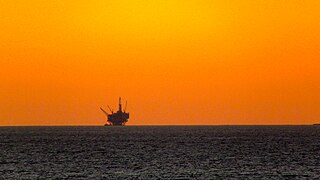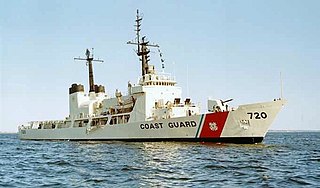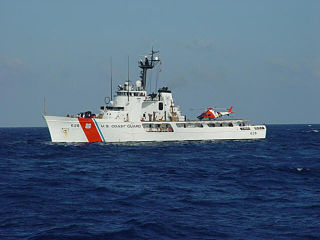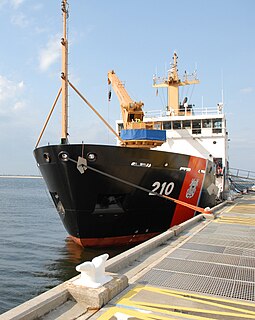 Marine Spill Response Corp. (MSRC) crew members aboard Pacific Responder during the “Safe Seas 2006 Oil Spill Response Exercise”. 9 August 2006. | |
| History | |
|---|---|
| Name: | Pacific Responder |
| Owner: |
|
| Port of registry: | |
| Builder: | VT Halter Marine, Inc. (formerly Moss Point Marine, Inc., Escatawpa, Mississippi |
| Completed: | 1992 |
| Acquired: | 01 January 1993 |
| Identification: |
|
| Status: | Operational |
| Notes: | [1] [2] |
| General characteristics | |
| Class and type: | ABS A1, Oil Recovery Vessel Class 1, AMS |
| Tonnage: | |
| Length: | 63 m (207 ft) |
| Beam: | 13 m (43 ft) |
| Depth: | 5 m (16 ft) |
| Deck clearance: | 7.33 m (24.0 ft) |
| Installed power: |
|
| Capacity: |
|
| Notes: | [1] [2] |
Pacific Responder is a Responder-class oil-skimming vessel registered in Norfolk, Virginia and based in San Francisco, California.

Norfolk is an independent city in the Commonwealth of Virginia in the United States. At the 2010 census, the population was 242,803; in 2017, the population was estimated to be 244,703 making it the second-most populous city in Virginia after neighboring Virginia Beach.

San Francisco, officially the City and County of San Francisco, is a city in, and the cultural, commercial, and financial center of, Northern California. San Francisco is the 13th-most populous city in the United States, and the fourth-most populous in California, with 883,305 residents as of 2018. It covers an area of about 46.89 square miles (121.4 km2), mostly at the north end of the San Francisco Peninsula in the San Francisco Bay Area, making it the second-most densely populated large US city, and the fifth-most densely populated U.S. county, behind only four of the five New York City boroughs. San Francisco is also part of the fifth-most populous primary statistical area in the United States, the San Jose–San Francisco–Oakland, CA Combined Statistical Area.

California is a state in the Pacific Region of the United States. With 39.6 million residents, California is the most populous U.S. state and the third-largest by area. The state capital is Sacramento. The Greater Los Angeles Area and the San Francisco Bay Area are the nation's second- and fifth-most populous urban regions, with 18.7 million and 9.7 million residents respectively. Los Angeles is California's most populous city, and the country's second-most populous, after New York City. California also has the nation's most populous county, Los Angeles County, and its largest county by area, San Bernardino County. The City and County of San Francisco is both the country's second-most densely populated major city after New York City and the fifth-most densely populated county, behind only four of the five New York City boroughs.
Pacific Responder and her sister ship, California Responder , operated off the coast of Louisiana in the Gulf of Mexico during the Deepwater Horizon oil spill. The vessels sailed to the gulf from their home ports in California to assist in the containment efforts. [3]

A sister ship is a ship of the same class or of virtually identical design to another ship. Such vessels share a nearly identical hull and superstructure layout, similar size, and roughly comparable features and equipment. They often share a common naming theme, either being named after the same type of thing or with some kind of alliteration. Often, sisters become more differentiated during their service as their equipment are separately altered.
California Responder is a Responder-class oil-skimming vessel registered in Norfolk, Virginia, USA, and based in Port Hueneme, California. California Responder and her sister ship, Pacific Responder, operated off the coast of Louisiana in the Gulf of Mexico during the Deepwater Horizon oil spill. The vessels sailed to the gulf from their home ports in California to assist in the containment efforts.
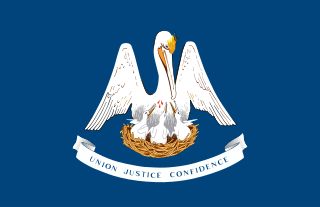
Louisiana is a state in the Deep South region of the South Central United States. It is the 31st most extensive and the 25th most populous of the 50 United States. Louisiana is bordered by the state of Texas to the west, Arkansas to the north, Mississippi to the east, and the Gulf of Mexico to the south. A large part of its eastern boundary is demarcated by the Mississippi River. Louisiana is the only U.S. state with political subdivisions termed parishes, which are equivalent to counties. The state's capital is Baton Rouge, and its largest city is New Orleans.
